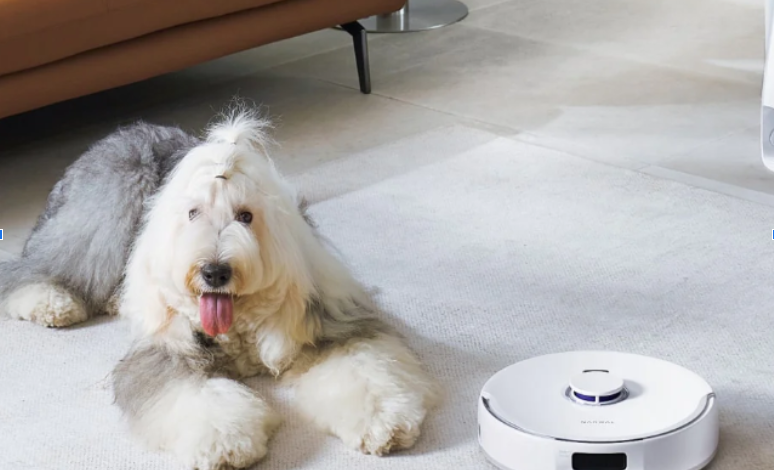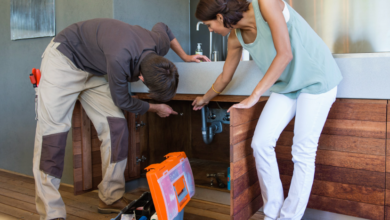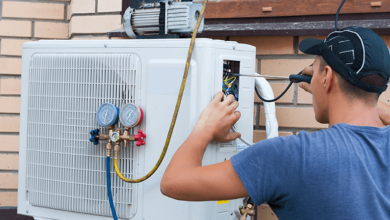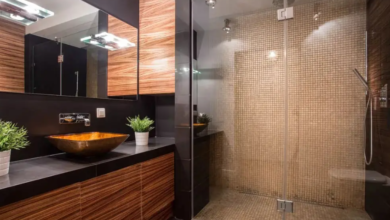Cleaning in the Smart Home Era: Advanced Techniques for High-Tech Flooring

Introduction: The Evolution of Cleaning
Cleaning has always been essential. Now, smart cleaning technologies are transforming how we maintain our homes and workplaces. These innovations improve efficiency, save time, and enhance cleaning quality. This article will explore the rise of smart cleaning technologies, discussing their features, benefits, and impact on our lives.
See also: Smart Home Automation: Making Life Easier and Safer
Understanding Smart Cleaning Technologies
Smart cleaning technologies are advanced tools designed to optimize and streamline the cleaning process. They combine cutting-edge technologies like artificial intelligence (AI), robotics, and the Internet of Things (IoT). These technologies adjust to different cleaning tasks, recognize environments, detect dirt, and improve future cleaning routines based on past tasks.
The Role of IoT in Smart Cleaning
The Internet of Things (IoT) is crucial for smart cleaning. IoT allows devices to connect to the internet, enabling remote control, scheduling, and monitoring. These connections create a more cohesive cleaning process, where devices work together for optimal results.
Types of Smart Cleaning Tools
Today, a wide range of smart cleaning tools are available, addressing specific cleaning needs.
- Robotic vacuums navigate homes and clean floors without human assistance.
- Smart mops use sensors to detect dirt and adjust cleaning intensity.
- Automated carpet cleaners simplify carpet maintenance.
These are just a few examples of how smart cleaning technologies transform cleaning.
Enhanced Cleaning Efficiency
Smart cleaning technologies significantly improve cleaning efficiency. They operate independently, freeing up time for other activities. Advanced sensors and AI optimize cleaning paths, ensuring thorough cleaning.
Integration with Home Automation
A key advantage of smart cleaning is its integration with home automation systems. This means controlling cleaning devices via a central hub or smartphone. You can schedule robotic vacuums or use voice commands through smart home assistants. This integration simplifies using smart cleaning with existing smart home ecosystems.
The Benefits of Smart Cleaning
Smart cleaning offers benefits beyond just cleaning. These technologies simplify life. They also promote smart home cleaning.
- Convenience: Program devices to clean at specific times.
- Remote Control: Start or stop cleaning from anywhere.
- Adaptability: Clean various surfaces in different environments.
For Busy Lifestyles
Smart cleaning technologies are especially beneficial for busy people. These devices clean autonomously, freeing up time. They can be programmed for convenient cleaning times, ensuring a clean home without disrupting routines.
Environmental and Cost-Effectiveness
Smart cleaning technologies are environmentally friendly and cost-effective. These devices use less water and fewer chemicals. They save money over time by reducing the need for supplies, energy and extensive manual cleaning.
Smart Cleaning in Action
Smart cleaning technologies are impacting commercial settings such as offices, hotels, and schools. These devices handle large-scale cleaning tasks efficiently, freeing staff for other duties. User reviews highlight their ability to clean hard-to-reach areas and adapt to surfaces.
User-Friendliness and Safety
Smart cleaning technologies are designed to be user-friendly, with intuitive controls and smartphone apps for operation. Safety features are also a priority. Obstacle detection and automatic shut-off mechanisms prevent accidents.
The Future of Smart Cleaning
The future of smart cleaning looks promising with ongoing developments in AI and IoT. Devices are becoming more efficient and versatile. Integrating AI and IoT is poised to revolutionize how we maintain cleanliness. As technology advances, smart cleaning will play a crucial role in hygiene, especially during health crises.
Challenges and Potential Developments
Despite advancements, smart cleaning faces challenges, like handling complex tasks or uncommon dirt types. Data privacy and security are also concerns. Future innovations may include advanced sensors for improved dirt detection and integration with renewable energy sources.
Smart Flooring: An Integral Part of Smart Cleaning and Home Automation
What is Smart Flooring?
Smart Flooring is a spatial intelligence data analytics platform for buildings with patented floor sensors, creating an interactive and data-rich experience. Smart Flooring utilizes floor sensors transforming passive surfaces to spatial intelligence data analytics platforms. It’s installed easily and customers utilize the high-resolution data, collected with each footstep in countless ways. In a school setting, smart flooring can optimize traffic flow. It may also help reduce fall-related patient injuries in healthcare.
Energy Efficiency with Smart Flooring
Residential and commercial buildings are responsible for nearly 40% of all carbon emissions annually. Heating, ventilation, and air conditioning processes all consume significant energy, and a large percentage of a building’s carbon footprint comes from conditioning unoccupied spaces. Energy saving is one of the most compelling aspect of Smart Flooring. The floors adjust lighting and climate control automatically. This not only provides a comfortable environment but also significantly reduces energy consumption, contributing to a greener, more sustainable planet.
With an average of 1.5% of coverage at exits and entrances, with built-in sensors for occupancy detection, smart floor cleaning techniques can minimize the need for extensive cleaning based on foot traffic, optimizing resource use. You can explore innovative cleaning solutions by using robot vacuums.
Flooring Data Promotes Energy Efficiency
Smart Flooring captures human movement within buildings to construct spatial intelligence. This can lead to dynamic adjustment of spaces to the changing presence of employees, leading to substantial cost savings and a more efficient use of resources. Additionally, the same precise occupancy data driving energy efficiency can also generate optimized daily facility cleaning schedules to save labor and supply costs.
The use of smart flooring helps answer crucial questions like
- How much space do I really need?
- Which workspaces do employees prefer?
- How can I drive higher real estate ROI?
With security systems, Smart flooring monitors movement and detect unauthorized access. Sensors also detect spills or slippery surfaces, alerting occupants to potential hazards. In this way, floors performs both security and maintenance duties, supporting trained staff in keeping buildings, and building occupants, secure.
Conclusion: Embracing Advanced Floor Cleaning Techniques
Smart cleaning technologies are revolutionizing cleaning with benefits, such as increased efficiency and environmental friendliness. Despite some challenges, these advanced solutions represent the future. We can expect even smarter cleaning tools as technology advances.





